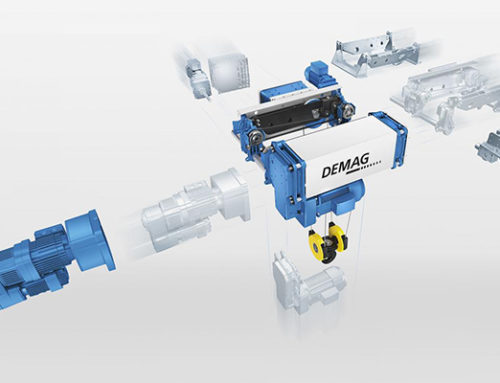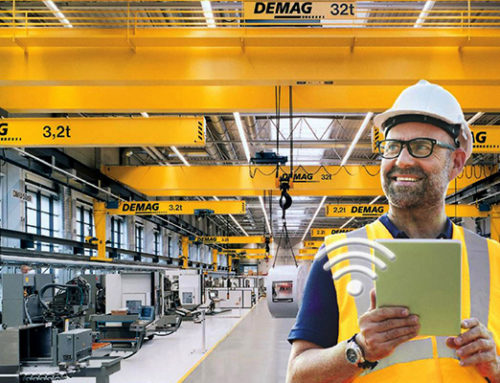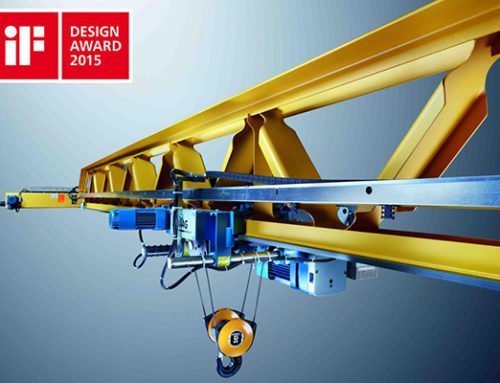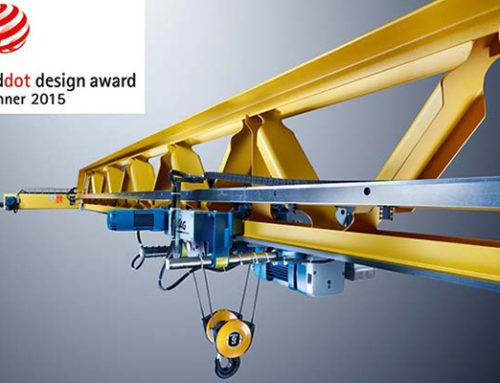OVERHEAD MATERIAL TRANSPORT
The aviation industry supplier Premium Aerotec relies on two Demag V-type cranes from Demag Material Handling for manufacturing and transporting aluminium skin panels that are used for aircraft fuselage segments. The low crane deadweight reduces loads on the building structure and provides even more scope for handling loads.
At the plant at its location in Nordenham (Lower Saxony), Premium Aerotec produces aluminium skin panels, which form the basis for the subsequent fuselage sections. These panels are first placed in autoclave moulds. Stringers are then bonded to them and a vacuum film is applied. This is then followed by a bonding process, which takes place in special pressure-tight kilns, which are called autoclaves.
First choice: cranes
Premium Aerotec utilises a crane as an overhead handling device to lift the individual component carriers with the fuselage sections into the autoclaves, and to transport them to an ultrasonic test facility after the bonding process. Until now, these tasks were performed by a double-girder overhead travelling crane that had box-section girders and was equipped with four 1.1 t hoist units. “Since the loads that this crane had to lift several times every day weighed around 4.1 tons, we were always working close to the limit”, explains Andreas Voge, who is responsible for assembly system factory planning at Premium Aerotec.
Planning for a new investment became more specific when the double-girder overhead travelling crane, which dates back to 1961, came up for refurbishment. To make the production processes more flexible, Premium Aerotec planned to invest in two single-girder overhead travelling cranes that can operate separately, as well as in tandem.
Due to the load-bearing capacity of the building structure, the two new cranes were not allowed to exceed the deadweight of the existing crane and, therefore, their wheel loads were not to be any higher.
Impressive crane concept
The Demag V-type crane satisfied all of the conditions – particularly in view of its reduced deadweight. This enabled the rated load capacity to be increased by a few hundred kilograms and the owner was better prepared to meet future developments.
Manufacturing aircraft components with V-type cranes
At its production plant in Nordenham, Premium Aerotec now operates two Demag V-type cranes that have spans of 24 m and are each equipped with two Demag DR-Pro 1.5 t rope hoists. Andreas Voge, who is responsible for assembly system factory planning at Premium Aerotec, reports: “By using two cranes, we have gained more flexibility. The cranes can also perform various transport tasks along the 115 m-long crane runway. However, they are still mainly used to serve the autoclaves. To do this, both cranes work in tandem and the four hoist units operate under synchronised control.”
Fred Maas, who co-ordinates materials handling equipment supplied by external vendors at Premium Aerotec adds: “Thanks to the V-type crane’s reduced oscillation characteristics, the jigs can be picked up and deposited in a more controlled way. Simple switch-over to tandem operation as well as the possibility to position components gently and carefully resulted in swift acceptance of the new cranes by our crane operators.”
Reduced effort, improved safety
A further aspect of the Demag V-type crane was essential for Premium Aerotec: safety during regular operation. Fred Maas explains: “This new type of crane offers another benefit: thanks to its V-type structure and vertical struts, the weld seams can be checked at a glance. The regular visual inspections can be completed within a quarter of an hour.”
A further aspect of the Demag V-type crane was essential for Premium Aerotec: safety during regular operation. Fred Maas explains: “This new type of crane offers another benefit: thanks to its V-type structure and vertical struts, the weld seams can be checked at a glance. The regular visual inspections can be completed within a quarter of an hour.”




Leave A Comment